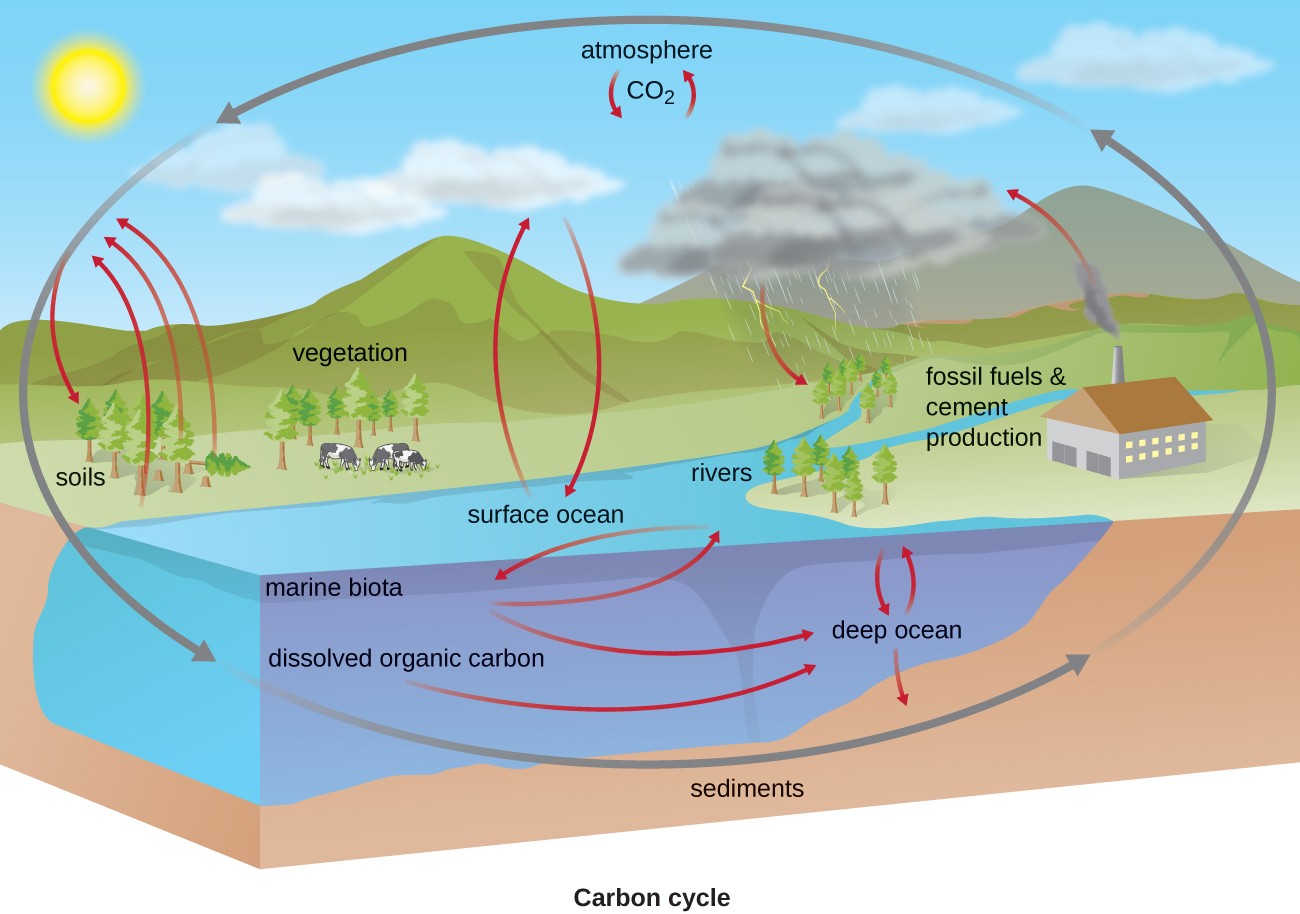Description
The BIOME-BGC (BioGeochemical Cycles) model is a multi-biome generalization of FOREST-BGC, a model originally developed to simulate a forest stand development through a life cycle . The model requires daily climate data and the definition of several key climate, vegetation, and site conditions to estimate fluxes of carbon, nitrogen, and water through ecosystems. Allometric relationships are used to initialize plant and soil carbon (C) and nitrogen (N) pools based on the leaf pools of these elements. Components of BIOME-BGC have previously undergone testing and validation, including the carbon dynamics and the hydrology.
BIOME-BGC estimated NPP (3.8 PgC yr-1) and total carbon storage (118 PgC) for the conterminous United States from derived Küchler potential vegetation for contemporary climate and CO2 concentrations. Of total carbon, soil and vegetation carbon were estimated at 70 and 48 PgC, respectively. In response to climate change, BIOME-BGC estimated NPP from 3527-4119 PgC yr-1 and total carbon storage from 74-98 PgC for the three climate scenarios (OSU, GFDL, and UKMO). Estimates of total carbon storage to changes in climate were caused by decreased NPP as a result of decreased water availability, and increased plant and soil respiration response to increased temperatures. Soil C losses accounted for 72-85% of the total C loss across the three climate scenarios. Doubled atmospheric CO2 caused continental-scale increased NPP by 11% (4.2 PgC yr-1) and total carbon storage by 7% (126 PgC) in BIOME-BGC. The NPP and total carbon responses of BIOME-BGC to changes in both climate and CO2 were essentially additive, with NPP ranging from 3.8-4.5 PgC yr-1 and total carbon storage from 79-107 PgC.
The coupled-BIOME-BGC and Biogeography model experimental results ranged from 3.8-3.9 PgC yr-1 for NPP and 120-122 PgC total carbon storage for contemporary climate. There were relative increases in NPP when BIOME-BGC is run with either the DOLY or MAPSS vegetation distributions for the UKMO climate. Estimates of NPP from coupled BIOME-BGC to the biogeography vegetation distributions and climate scenarios ranged from 3.8-5.0 PgC yr-1 for changed climate and doubled CO2 concentrations. Similarly, total carbon storage ranged from 73-120 PgC, with the MAPSS vegetation and UKMO climate scenario exhibiting the largest total carbon storage reduction (39%). This was an absolute loss of 47 PgC of which 33 Pg was from soil, and 14 Pg from vegetation. Increased water use efficiency produced by higher CO2 concentrations was insufficient to overcome the negative effects of increased water stress on NPP resulting from warmer climates. The decrease in forested area from 44% to 38% under the MAPSS vegetation is responsible for the structural response. The functional response indicates a large reduction in carbon density within the forests. The reduction is caused by a combination of lower NPP due to water stress and higher plant respiration and decomposition caused by elevated temperature. In BIOME-BGC, the Q10 for the decomposition relationship is 2.4 as compared for 2.0 in the other biogeochemistry models. Of the three biogeochemistry models (BIOME-BGC, CENTURY, and TEM), BIOME-BGC predicted the highest losses of total carbon as a result of changed climate and doubled atmospheric CO2 concentrations.
Model scale and resolution
Biome-BGC has a daily time step and no explicit spatial scale. The model has an intermediate number of vegetation (4) and litter/soil (3) pools.
Precursors
Biome-BGC is a multi-biome generalization of FOREST-BGC, a model originally developed to simulate a forest stand development through a life cycle . Biome-BGC combines Forest-BGC with MT-CLIM, which extrapolates meteorological driving variables from valleys to different slopes, aspects, and elevations.
Inputs
Climate variables
- Daily temperature (min, max in degrees C)
- Daily total precipitation (cm)
- Daily vapor pressure (Pa)
- Daily total solar radiation (W/m2)
- Daily total photosynthetically active radiation (W/m2)
Site variables
- Soil depth with rock fraction removed (m)
- Sand, silt, clay (% of rock-free volume)
- Soil water content at field capacity and at critical water potential (m3/ha)
- Slope and aspect (degrees)
- Soil temperature at 20 cm depth (degrees C)
- Elevation (m)
- Latitude (decimal degrees)
- Daylength (sec)
- Shortwave albedo (dimensionless)
- Total atmospheric nitrogen deposition (kg N/m2/y)
- Total fixation of nitrogen (kg N/m2/y)
Lifeform variables
- Precipitation interception coefficient (mm/LAI)
- Light extinction coefficient (1/LAI)
- Turnover coefficients for leaf, stem, and root (%/y)
- Specific leaf area (m2/kg)
Initial conditions
The initial atmospheric CO2 and the initial water in soil and snowpack are specified. Allometric relationships extrapolate from carbon (C) and nitrogen (N) in the leaf pool to initial stem, root, soil, and litter pools.
Testing and validation
Components of BIOME-BGC have previously undergone testing and validation, including the carbon dynamics and the hydrology. BIOME-BGC is sensitive to temperature.









